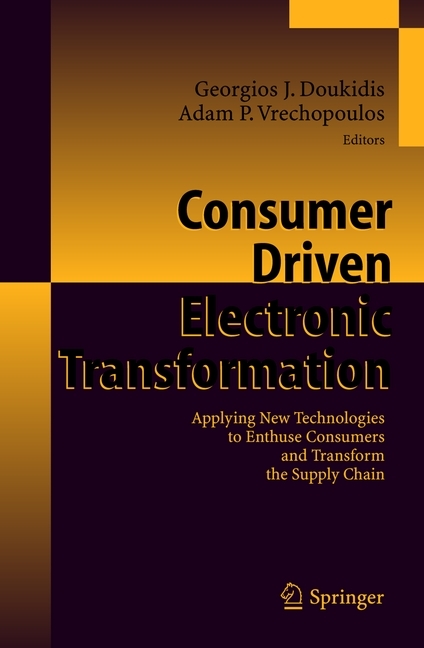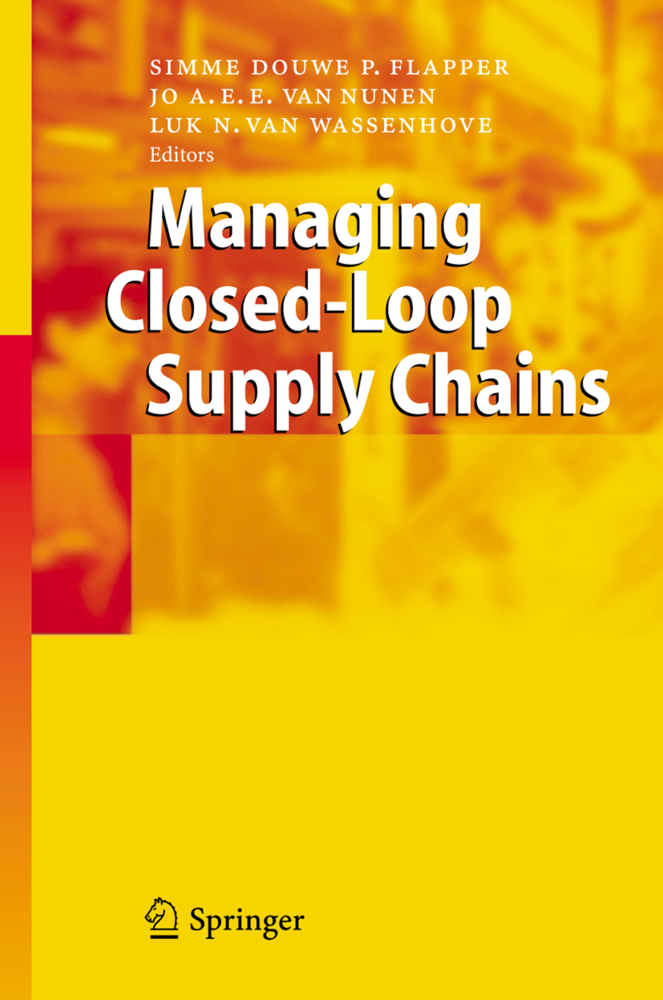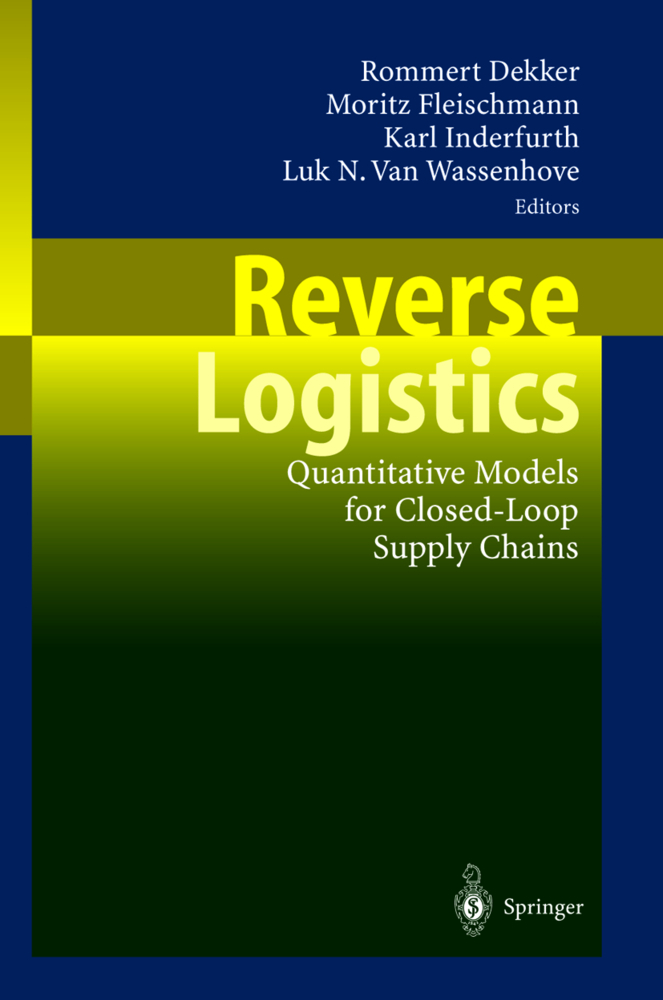Consumer Driven Electronic Transformation
Applying New Technologies to Enthuse Consumers and Transform the Supply Chain
The book focuses on the emerging techniques and technologies for supply chain management and collaboration as well as on the emerging relationships and the electronic transformations governing multichannel retailing. It aims at supporting retailers, consumer goods manufacturers and third parties applying the latest technological inventions to transform the value chain. It also attempts to guide practitioners to effectively proceed in employing new technologies to ignite consumer enthusiasm. Similarly, the objective of this book is to help companies target more accurately consumer and shopper wishes with focused investments, in shorter time, and with more success.
1;Foreword;5 2;Preface;7 3;Contents;9 4;Introduction;11 5;PART 1 EMERGING TECHNIQUES AND TECHNOLOGIES FOR SUPPLY CHAIN MANAGEMENT;17 5.1;Improvement Opportunities in Retail Logistics;18 5.1.1;1 Introduction;18 5.1.2;2 The Level of Differentiation when Controlling the Operations;19 5.1.3;3 The Level of Sophistication in Reorder Systems;24 5.1.4;4 The Level of Integration of Multiple Decisions (Made by the Retail Company and/ or Its Supply Chain Partners);26 5.1.5;5 Concluding Remarks;28 5.1.6;6 References;28 5.2;A Dynamic Real-Time Vehicle Routing System for Distribution Operations;31 5.2.1;1 Introduction;31 5.2.2;2 Urban Freight Movement;32 5.2.3;3 Vehicle Routing Parameters;33 5.2.4;4 Vehicle Routing Systems (VRS);35 5.2.5;5 A Generic Architecture for Dynamic Real-Time VRS;37 5.2.6;6 Conclusions and Research Directions;42 5.2.7;7 References;43 5.3;Bargaining and Alliances in Supply Chains;46 5.3.1;1 Introduction;46 5.3.2;2 The Problem;48 5.3.3;3 The Bargaining Framework;49 5.3.4;4 Negotiation Power;51 5.3.5;5 References;57 5.4;Last-Mile Supply Chain Integration: Easy Connection and Information Exchange between Suppliers and Retailers;59 5.4.1;1 The Past: Developing the Need;59 5.4.2;2 A Market Approach;61 5.4.3;3 The Present: Realizing the Shift;62 5.4.4;4 The New Trading Exchange Paradigm;64 5.4.5;5 Using the Internet-based Trading Hubs;67 5.4.6;6 Related Technologies;73 5.4.7;7 The Future: Expand and Extend;74 5.4.8;8 References;75 6;PART 2 MULTICHANNEL RETAILING: RELATIONSHIPS, INTEGRATION AND ELECTRONIC TRANSFORMATION;76 6.1;Multichannel Retailing and Brand Policies;77 6.1.1;1 Introduction;77 6.1.2;2 Store Formats, Retail Innovation and the Attributes of Retail Service;78 6.1.3;3 Multichannel Retailing and Consumer Purchasing Behaviour;83 6.1.4;4 Multichannel Retailing and Brand Policies;89 6.1.5;5 Concluding Remarks;92 6.1.6;6 References;92 6.2;Designing Alternative Store Layouts for Internet Retailing;95 6.2.1;1 Introduction;95 6.2.2;2 Hypertext/Web Design Approach;95 6.2.3;3 Virtual Store Layout Analysis and Design;100 6.2.4;4 Concluding Remarks and Future Research Directions;112 6.2.5;5 References;112 6.3;In Search for Viable e-Solutions;114 6.3.1;1 Introduction;114 6.3.2;2 Consumers' e-Commerce Behavior;115 6.3.3;3 Strategies by Successful e-Commerce Companies;118 6.3.4;4 Comments on the Two Perspectives;120 6.3.5;5 Discussion;122 6.3.6;6 Conclusion;127 6.3.7;7 References;128 7;PART 3 BEYOND CPFR: DEFINING THE FUTURE OF SUPPLY CHAIN COLLABORATION;131 7.1;On Shelf Availability: An Examination of the Extent, the Causes, and the Efforts to Address Retail Out- of- Stocks;132 7.1.1;1 Introduction;132 7.1.2;2 What Is the Extent of Shelf Out-of-Stocks?;133 7.1.3;3 What Are the Consumer Reactions to Shelf Out-of- Stocks?;134 7.1.4;4 What Is the Cost of Shelf Out-of-Stocks to the Retailer?;137 7.1.5;5 What Are the Root Causes of Shelf Out-of-Stocks?;139 7.1.6;6 How Can On-Shelf Availability Be Improved?;142 7.1.7;7 Conclusions;145 7.1.8;8 References;146 7.1.9;Appendix 1: The Research Study Description;147 7.1.10;Appendix 2: Measuring Out-of-Stocks;149 7.2;Increasing Shelf Availability Through Internet- Based Information Sharing and Collaborative Store Ordering;151 7.2.1;1 Introduction;151 7.2.2;2 Internet-based Information Sharing and Collaborative Store Ordering;153 7.2.3;3 Measuring the Impact on Shelf Availability;157 7.2.4;4 Practical Implications;160 7.2.5;5 Conclusions;163 7.2.6;6 References;164 7.3;Towards the Development of an Algorithm to Discover Out- Of- Shelf Situations;167 7.3.1;1 Introduction;167 7.3.2;2 Rating the Out-Of-Shelf Problem;168 7.3.3;3 Development Method for the OOS;172 7.3.4;4 Conclusions;176 7.3.5;5 References;176 7.4;Food Value Chain Analysis;178 7.4.1;1 Introduction;178 7.4.2;2 Value Chain Analysis;179 7.4.3;3 Key Issues;180 7.4.4;4 Animal Grading;181 7.4.5;5 Carcase Balance;184 7.4.6;6 Point of Sale Availability;185 7.4.7;7 Integrated Value Chain System;187 7.4.8;7 References;190 7.5;Extending E
Doukidis, G. J.
Vrechopoulos, A. P.
| ISBN | 9783540270591 |
|---|---|
| Artikelnummer | 9783540270591 |
| Medientyp | E-Book - PDF |
| Auflage | 2. Aufl. |
| Copyrightjahr | 2005 |
| Verlag | Springer-Verlag |
| Umfang | 257 Seiten |
| Sprache | Englisch |
| Kopierschutz | Digitales Wasserzeichen |











